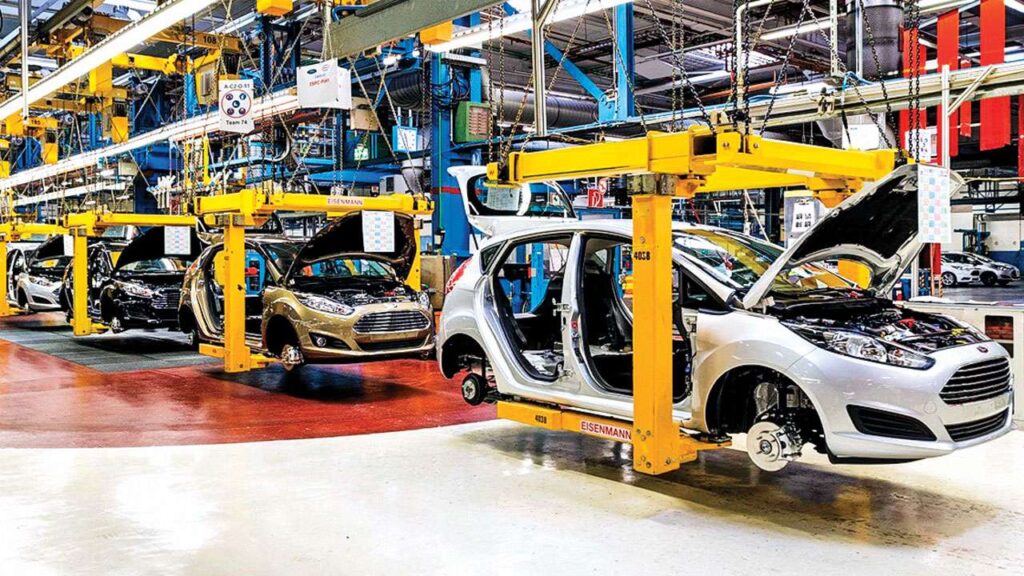The Indian automobile industry has traditionally been a reliable gauge of the country’s economic well-being, as it plays a crucial role in macroeconomic expansion and technological progress. A major driving force behind the expansion of the Indian automotive market has been the growth of the nation’s economy. As the economy has continued to grow at a steady pace, consumer spending has also risen, leading to the expansion of the middle class in recent years. This has resulted in an upsurge in demand for automobiles, driven in part by the middle class’s aspiration for status and success.
Despite the obstacles, the Indian automotive industry experienced a significant growth of 23% in 2022. According to a report by Nikkei Asia, India has surpassed Japan in terms of new auto sales for the first time, becoming the third-largest market. Preliminary results indicate that India sold 4.7 million units of new vehicles in 2022, while Japan sold slightly over 4.2 million units. Nikkei Asia also claims that the easing of chip shortages has aided leading Indian auto firms such as Maruti and Tata Motors in boosting their sales in 2022.
Vehicles in India – What the data has to say
The number of vehicles per million population in India is around 3,334 which automatically suggests that there is a lot more room for growth. The average Indian household’s economic status is stabilizing, so more and more vehicles will be sold in the future. This number is estimated to make India the largest automotive market in the world in the future. Currently, the Indian states of Maharashtra, Uttar Pradesh and Karnataka have the highest number of vehicles on road as of 2022. Other states are catching up with their automotive demands too and are working towards relevant subsidies & policies to promote the automobile industry..
The Indian government has introduced several policies to encourage the growth of the automobile industry, such as tax incentives and subsidies for electric vehicles. These policies have encouraged investment in the industry and have led to the development of new technologies and business models. The increasing availability of financing options has also played a significant role in the rise of the Indian automotive market. The growth of the banking and finance sector in India has led to the availability of a range of financing options, making it easier for consumers to purchase vehicles. This has led to a rise in demand for automobiles, particularly among the growing middle class.
In 2021, the value of the passenger car market in India reached US$ 32.70 billion and is projected to rise to US$ 54.84 billion by 2027, with a compound annual growth rate (CAGR) of over 9% from 2022 to 2027. The electric vehicle (EV) market in India is predicted to grow to US$ 7.09 billion by 2025, with a US$ 206 billion opportunity recognized by a study conducted by the Centre for Energy Finance for EVs in India by 2030. This growth will require an investment of US$ 180 billion in vehicle manufacturing and charging infrastructure.
According to a report by NITI Aayog and the Rocky Mountain Institute (RMI), India’s EV finance sector is expected to reach Rs. 3.7 lakh crore (US$ 50 billion) by 2030, while the India Energy Storage Alliance estimated that the EV market in India will have a CAGR of 36% until 2026.
India is a significant player in the automotive export market, with high expectations for export growth in the coming years. Furthermore, the Indian government has launched various initiatives, such as the Automotive Mission Plan 2026, a scrappage policy, and a production-linked incentive scheme, aimed at enhancing the Indian automotive industry’s growth potential. As a result of these initiatives, India is projected to become a leading global market for two-wheelers and four-wheelers by 2022.
What about the Electric Vehicle segment ?
India is still an emerging market for electric vehicles (EVs), with the majority of vehicles still powered by gasoline, despite an uptick in EV adoption. Nonetheless, the Indian auto component industry has experienced significant growth of 23%, contributing 2.3% of India’s GDP at ₹4.20 lakh crore, according to Sunjay Kapur, President of ACMA. This expansion can be attributed to several factors, including robust and diversified demand, a skilled workforce, and precision engineering. Additionally, an ACMA-McKinsey report predicts that the contribution of EVs to new two-wheeler and three-wheeler sales will reach 50% and 70%, respectively, by 2030.
Furthermore, the Indian government’s Production Linked Incentive (PLI) program for the automobile sector, which has a budget of $3.5 billion, provides financial incentives of up to 18% to promote local production of automotive components related to future technology. The government has also implemented the Faster Adoption and Manufacturing of Hybrid & Electric Vehicles in India (FAME) program to encourage the adoption of EVs through subsidies.
International and Geopolitical Influence
The rise of the Indian automotive market has also been driven by the increasing number of foreign automakers entering the market. Major international automakers such as Honda, Toyota, and BMW have established a presence in India, recognizing the potential for growth in the market. These international automakers have brought new technologies and models to the market, increasing competition and driving innovation.
India has already become the largest market for Suzuki outside of Japan, and it is among the top three markets for Hyundai, Kia, and Skoda Auto as of 2022. Additionally, it was one of the top five markets for Renault globally in 2021, and it is expected to play a more prominent role for other automakers in the future. The Russia-Ukraine crisis has raised the stakes for India, as Hyundai, Kia, Renault, Nissan, and Skoda-Volkswagen have all withdrawn from Russia, and future growth potential lies in a few select markets such as India.
Although the shortage of chips and supplies from China disrupted production and supplies in the first half of 2022, India’s management of the Russia-Ukraine crisis helped the country to handle inflationary challenges effectively.
By 2023, the Indian government anticipates that the automobile sector will attract investments of US$ 8-10 billion from both local and foreign sources. There is a potential for India to emerge as a prominent player in shared mobility, which could open up avenues for electric and autonomous vehicles, with a target of achieving this goal by 2030.
The emergence of Online Vehicle Sales platforms
The Indian automotive market has experienced growth due to the rising popularity of e-commerce and online platforms. The emergence of platforms like CarDekho, OLX, and Cars24 has facilitated the process of buying and selling new/used cars, making it more convenient for consumers to conduct research and transactions. This has reduced the dependence on physical dealerships.
These platforms have made it easier for consumers to research and buy cars. They offer a wide variety of options to choose from and allow buyers to compare prices and features across different models and brands. This has led to increased transparency in the car market (both used and new), making it more accessible and attractive to buyers.
These platforms have also made it easier for sellers to reach potential buyers. They provide a convenient and cost-effective way for sellers to advertise their vehicles and connect with interested buyers. This has helped increase the supply of used cars available in the market, creating more competition and putting downward pressure on prices.
What the future looks like
In conclusion, the rise of the Indian automotive market can be attributed to a combination of factors, including the growth of the Indian economy, government initiatives to promote the automobile industry, the increasing number of foreign automakers entering the market, the increasing availability of financing options, and the increasing popularity of online platforms. The Indian automotive market is poised for continued growth in the coming years, making it an exciting time for the industry and consumers alike.
The Indian automotive industry relies on several factors, including access to low-cost skilled labour, robust R&D centres, and affordable steel production. It presents significant investment opportunities and provides direct and indirect employment for both skilled and unskilled labour. The shift towards electric vehicles is expected to create five crore jobs by 2030.
In August 2022, the Indian government launched the country’s first double-decker electric bus in Mumbai, indicating a long-term need for an overhaul of the transportation system. The government is working to establish an integrated electric vehicle mobility ecosystem that has a low carbon footprint and high passenger density, with a focus on urban transportation reform. Its policies and strategies aim to promote the widespread adoption of electric vehicles in response to growing consumer demand for cleaner transportation options. After recovering from the impact of the COVID-19 pandemic, the Indian auto industry is expected to experience significant growth in 2022-23. Electric vehicles, particularly two-wheelers, are predicted to achieve positive sales during this period.





More Stories
The Ultimate Guide To The Best Cars For First-Time Buyers In India
Everything You Must Know About Run-flat Tyres
A comprehensive battery maintenance guide for electric four-wheelers